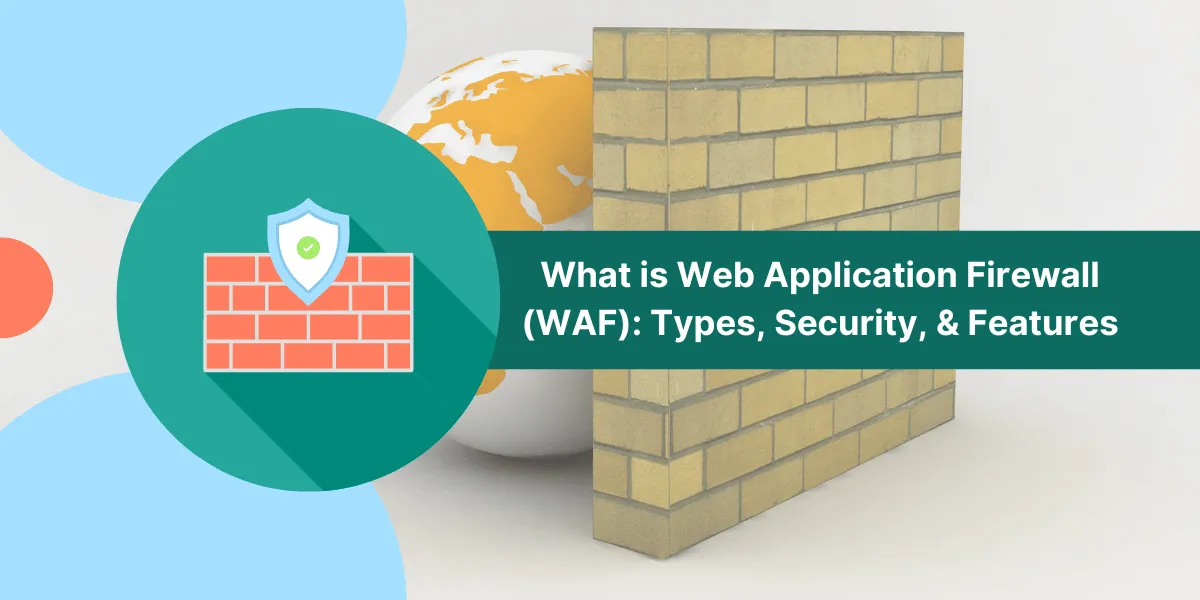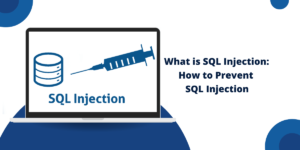What is Web Application Firewall (WAF)?
A Web Application Firewall (WAF) is a firewall designed to monitor, filter, and block HTTP traffic to and from a web application. A WAF provides a protective layer for web apps, analyzing all incoming HTTP traffic to block threats and prevent attacks. WAFs work by intercepting requests and filtering out potentially harmful traffic before it reaches the web application.
WAFs are a core component of application security today, providing deep inspection of traffic, virtual patching, bot mitigation and more. They are deployed across many industries like finance, healthcare, retail and others to secure public facing web apps.
Key Takeaways
- WAFs analyze all HTTP traffic and block threats like SQL injection, cross-site scripting, etc.
- They sit between a web app and the internet, acting as reverse proxies for web apps.
- WAFs have rule sets to filter good vs bad traffic based on IP, headers, payload, etc.
- The main WAF types are appliance, cloud, and API-based WAFs, each with pros and cons.
- Key WAF features include virtual patching, bot mitigation, DDoS protection, and encryption.
- WAFs provide an added layer of security but do not replace secure coding practices.
- Implementation requires planning for performance, maintenance, rules tuning, and traffic filtering legality.
Why are WAFs Needed?
Websites and web applications are prime targets for cybercriminals today, with attacks ranging from data theft to service disruption. Traditional network firewalls at the perimeter provide basic IP/port filtering but lack application layer visibility and security.
A WAF bridges this gap by analyzing web traffic at the application layer, beyond just source/destination IP and ports. WAFs inspect the full HTTP request – headers, payload, cookies, URLs, etc. This allows for the identification and blocking of threats designed to exploit vulnerabilities in web apps.
Some key reasons why WAFs provide critical security for websites and web apps:
- Detect Known Application Attacks:WAFs have signature databases of 1000s of known exploits and attack patterns to accurately detect threats like SQLi, XSS, LFI, RFI, etc. This protects apps from common attack vectors hackers employ.
- Virtual Patching of Vulnerabilities:When bugs exist in web apps, WAFs can create virtual patches to protect apps while code fixes are pending. This reduces the window of exposure.
- Blocking of Malicious Bots:Automated bots that scrape data, spam forms and brute force logins can be blocked by WAF behavioral analysis. This prevents resource drain.
- Protection from DDoS Attacks:Volumetric DDoS attacks aiming to overwhelm servers can be mitigated by WAFs before traffic hits web apps. This maintains availability.
- Centralized Security Policy Enforcement:Security and compliance policies can be enforced consistently across multiple web apps via a single WAF. Reduces configuration errors. Additionally, a firewall policy manager can help quickly and accurately change rules to ensure compliance.
- Prevent Data Theft and Tampering:WAF rules can validate inputs and stop leakage of sensitive data, cookies, or parameters to prevent theft.
How Does a WAF Work?
WAFs are designed as reverse proxy servers that intercept traffic headed for web applications. All HTTP/HTTPS requests pass through the WAF before reaching the web apps. This allows inspecting traffic and applying security policies.
WAF Working Steps:
- The client sends HTTP/HTTPS requests to the web app
- The request is intercepted by the WAF appliance or server
- WAF analyzes the request attributes like headers, payload, and cookies against its policies
- Valid requests are passed on to the web apps. Malicious requests are blocked.
- The web app processes requests and sends back a response to the client
- The response may be analyzed by WAF for data leakage prevention
How WAF Inspection and Rulesets Work
- Parsing HTTP Traffic: WAFs use optimized web traffic parsers to analyze HTTP headers and payload in detail for signs of attacks. This includes scrutiny of methods, URL parameters, post data, cookies, user agents, etc.
- Signature-Based Detection: Known attack payloads and patterns are matched against requests to identify malicious packets. Signatures are updated regularly.
- Heuristic Analysis: Suspicious payloads are flagged using statistical models and analyzed for common attack attributes like code obfuscation. This allows for catching zero-day threats.
- Custom Rules and Policies: Admins can create custom rules based on app logic and security needs, like input length validation, mandatory headers etc.
- IP Reputation Monitoring: Requests from known bad IPs are blocked by checking against IP reputation databases. Geographic IP blocks can also be enforced.
- Bot Detection: Behavioral analysis spots bots via techniques like excessive crawl rate, scrape patterns, mouse movement, etc. Captchas can be used.
- Anomaly Scoring: Each request is assigned an anomaly score based on attack indicators like suspicious headers, payload, velocity, etc. High-scoring events are blocked.
The WAF rulesets combine multiple techniques – from signature analysis and heuristics to custom logic – to maximize threat detection accuracy. The goal is to filter the malicious requests and pass only legitimate traffic through to web apps.
Now that we understand how WAFs function let’s look at the core features and capabilities that modern WAFs provide.
Key Features and Capabilities of WAFs
WAFs offer a robust set of security capabilities leveraging their deep traffic inspection and centralized policy control abilities. Here are some key features of a full-fledged WAF solution:
Virtual Patching
When vulnerabilities in web apps are disclosed, it takes time for code fixes to be implemented. WAFs can create virtual patches to immediately block exploit attempts. For example, a WAF rule can block SQL injection on a parameter till the backend code is patched.
Bot Mitigation
Scraping, spamming, and brute force bots can be detected using behavioral analysis and then blocked or challenged via CAPTCHAs. This reduces resource drain on apps.
DDoS Protection
Volumetric DDoS attacks aiming to saturate network and web application servers can be detected and absorbed by the WAF before they reach the apps.
SSL/TLS Offloading
WAFs can terminate HTTPS connections, inspect traffic and re-encrypt before forwarding to apps. This offloads overhead of encryption from web servers.
Web Scraping Control
Block or rate limit web scraping activity based on attributes like IPs, referral header, velocity patterns, etc. Prevents data harvesting.
Input Validation
Malformed user inputs like buffer overflows and invalid object references can be blocked based on data type, length, special characters, and other checks.
Cookie Security
Detect cookie manipulation or poisoning attempts and enforce cookie security attributes like HttpOnly, Secure, SameSite, etc.
Data Masking
Mask sensitive data like credit cards and social security numbers in response to prevent accidental exposure.
Signature Updates
WAF signatures are updated regularly to address the latest OWASP vulnerabilities, zero days, and attack patterns.
Logging and Analytics
Detailed logging of all requests, anomalies, alerts, and blocked threats provides visibility into traffic and attacks.
Policy Enforcement
Centrally enforce organization’s web security policies like header validation, file types, Geo-IP blocks, URLs etc.
Incident Response
Quickly respond to threats by temporarily blocking IPs, adding new rules, integrating with Security Orchestration (SOAR) systems, etc.
Compliance
Helps comply with regulations like PCI DSS for credit cards, HIPAA for health data etc. that mandate app security.
What are the Types of WAF Deployments
WAFs can be categorized based on their underlying platform or architecture:
WAF Appliances
Dedicated hardware appliances installed on-premise. They have built-in software optimized for WAF processing, like specialized operating systems, web servers, and rule engines.
Pros: Maximum performance and throughput. Full control over hardware specs and software.
Cons: Appliance costs. Limited flexibility. Log in to deploy new features or tools.
Cloud WAF
WAF is offered as a service by cloud providers like AWS, Azure, and Google Cloud. Don’t need dedicated hardware.
Pros: No hardware costs. Easy and quick to deploy. Flexible scaling. Regular feature updates.
Cons: Vendor lock-in. Limited customization of policies. Privacy concerns of traffic inspection.
API WAF
WAF capabilities offered via an API service to embed in apps and APIs. Don’t need separate proxy server.
Pros: Integrates within modern app architectures like containers serverless. Flexible deployment.
Cons: Only protects web APIs, not full web apps. Increased complexity.
WAF Modules
WAF engines are packaged with web servers like NGINX, Apache, IIS, or CDNs. Enable built-in WAF capabilities.
Pros: Leverage existing web server infra. Tightly integrated. Potential performance gains.
Cons: Limited features compared to full WAF. Rule management is not centralized.
Security Benefits of Using a WAF
Here are some of the key security advantages organizations gain by implementing WAF protections:
- Blocks known attacks: WAF signatures protect apps from thousands of exploit payloads and patterns, like the OWASP Top 10 threats.
- Stops automated bots: Scrapers, spammers, and brute forcers can be stopped from draining app resources.
- Mitigates DDoS volumes: Large flood attacks are absorbed so apps stay available and servers don’t crash.
- Virtually patches vulnerabilities: Newly disclosed bugs can be shielded while code fixes progress behind the scenes.
- Centralized policy enforcement: Consistent rulesets improve security posture across all web apps.
- Reduces data theft: Validating inputs and masking data prevents attackers from scraping sensitive info.
- Increases visibility: Detailed logging provides visibility into overall traffic patterns, anomalies, and blocked threats.
- Simplifies audit compliance: Helps meet regulatory requirements by protecting apps. Reduces audit burden.
- Improves incident response: New threat patterns can be quickly blocked and integrated with SOC workflows.
WAFs serve as policy enforcement points, improving defense in depth for websites and web applications. However, they have some limitations too which are important to note.
Limitations of WAF Security
While WAFs offer strong protections, they have some drawbacks to be aware of:
- Not a replacement for secure coding: WAFs complement but don’t replace practice of writing secure code without vulnerabilities.
- Risk of false positives: Legitimate traffic may get inadvertently blocked if rules are too strict or misconfigured.
- Maintenance overhead: WAF policies need regular tuning as app logic changes to avoid blocking valid requests.
- Only inspects HTTP/HTTPS: Threats over other protocols like SMTP, DNS, and SSH are not visible.
- Hardening against bypasses: Sophisticated attackers try evading WAF detection by obfuscating payloads.
- Performance impact: WAF inspection can bottleneck traffic flow if not sized adequately.
- Changing compliance needs: As regulations evolve, WAF rules need to be updated to check new vulnerabilities.
- Visibility is limited to one WAF. It lacks a complete view of whether apps use different WAFs and vendors.
WAF Implementation and Maintenance
Deploying WAFs requires planning various architectural, operational, and policy aspects:
- Sizing for Performance: Size WAF instances based on expected traffic so performance doesn’t suffer. Load testing helps determine this.
- High Availability: Implement failover and redundancy mechanisms like load balancers, active-passive WAF pairs etc. to avoid single point of failure.
- Rule Tuning: Rules need continuous tuning as applications change to avoid blocking legitimate traffic. Use tuning periods to validate rules.
- Monitoring for Bypasses: Watch for signs of WAF evasion like unusual spikes, payloads with protocol violations etc. and strengthen detections.
- Patching and Upgrades: Ensure regular updates of WAF software, OS version, signatures, and geo-databases to stop the latest threats.
- Change Management: Have a change management process for modifying WAF policies and rules to prevent unexpected business impacts.
- Compliance Reporting: Collect audit evidence like rule change records, traffic logs, to demonstrate WAF protections for auditors.
- Cost Analysis: Factor in ongoing costs for maintenance, tuning, monitoring, and upgrades beyond just deployment.
With careful planning and resources allocated to operations, organizations can maximize their WAF security and get the most from their investment.
Comparing Top WAF Vendors
There is a wide variety of WAF vendors in categories like cloud WAF, on-prem WAF, WAF modules, and API protection.
Here is a comparison of leading options:
- Cloudflare: A popular cloud WAF due to ease of setup and usage-based billing. Offers free basic plan. More limited rule customization capability.
- Akamai: Leader in cloud WAF focused on performance with an extensive global edge network. Wide threat coverage but very pricey.
- Imperva: Top on-prem WAF appliance option with advanced bot mitigation. Pricey but full-featured for enterprise security teams.
- F5 Big-IP ASM: Long-standing WAF module for F5 load balancers and firewalls. Tightly integrated but light on features compared to dedicated WAFs.
- Barracuda: Positioned as mid-range WAF combining both cloud and on-prem models. Comprehensive capabilities at moderate pricing.
- Signal Sciences: API and microservices-focused WAF designed for DevOps teams with emphasis on integration and usability.
There are also open source WAF options like ModSecurity along with commercial modules for servers like NGINX and Apache. Organizations should match needs with vendor capabilities when selecting WAF platforms.
Final Words
In summary, a Web Application Firewall (WAF) is a critical security tool for protecting web applications from a wide range of cyber threats. By monitoring and filtering incoming web traffic, a WAF can detect and block malicious activities such as SQL injections, cross-site scripting, illegal resource access, and other application-layer attacks.
As web applications become increasingly complex and vulnerable, a well-configured WAF has become an essential component of a robust cybersecurity strategy. By providing an additional layer of defense at the application level, a WAF can help organizations safeguard their sensitive data and maintain the integrity of their web-based systems.
Frequently Asked Questions (FAQs)
What are the main differences between a WAF and a traditional firewall?
Traditional firewalls only filter based on IP, port, and protocol information in network packets. WAFs analyze web traffic at the application layer, inspecting HTTP headers, parameters, and payloads for signs of attacks. This allows the detection of threats designed to exploit app vulnerabilities.
Does a WAF encrypt web traffic?
WAFs typically terminate HTTPS connections from users, inspect plaintext traffic, and then re-encrypt before sending to web apps. This provides inspection without apps needing to decrypt traffic themselves. WAFs offload TLS overhead. Some WAFs also offer client certificates for two-way SSL authentication.
Can a WAF stop DDoS attacks?
Yes, WAFs can mitigate various types of DDoS attacks. Volumetric floods trying to saturate bandwidth are absorbed by the WAF infrastructure. Protocol and app layer attacks are filtered based on anomaly scoring and thresholds. WAFs help keep apps available during DDoS.
What is virtual patching in a WAF?
Virtual patching refers to the ability of a WAF to quickly block newly discovered vulnerabilities in web apps before code fixes are deployed. For example, if an SQLi is found, the WAF can filter that injection payload temporarily while the backend app is patched.
How are WAF rules defined?
WAF rules and policies use various criteria like web app URLs, HTTP parameters, request methods, IP addresses, response codes, signatures, regex patterns, whitelists, and custom logic. Rules can be layered from generic to specific.
Can a WAF inspect HTTPS traffic?
Yes, WAFs typically act as SSL termination proxies, decrypting HTTPS connections to inspect plaintext traffic before re-encrypting and forwarding to web apps. The apps don’t need to decrypt connections themselves.
What is a false positive in the context of WAFs?
False positives refer to instances where legitimate user traffic gets incorrectly blocked by the WAF due to overbroad or inaccurate rules. For example, blocking all JSON data inputs could block valid user actions. False positives need to be minimized.

Priya Mervana
 Verified Web Security Experts
Verified Web Security Experts
Priya Mervana is working at SSLInsights.com as a web security expert with over 10 years of experience writing about encryption, SSL certificates, and online privacy. She aims to make complex security topics easily understandable for everyday internet users.



